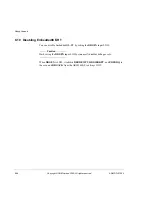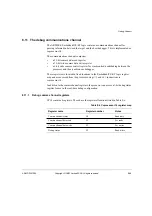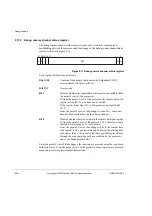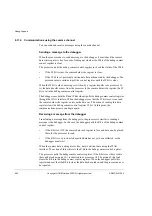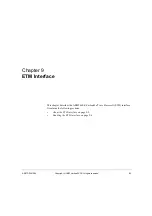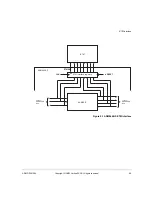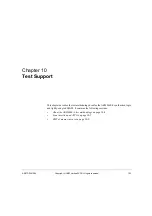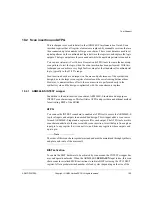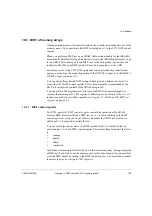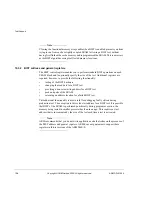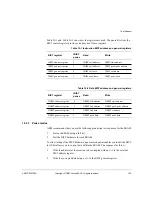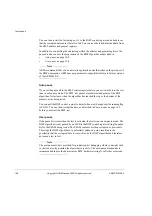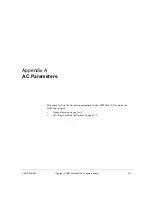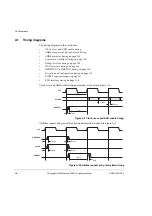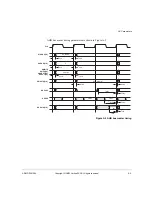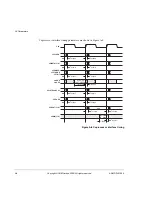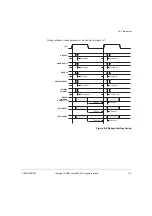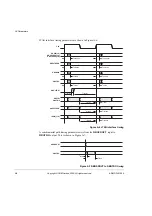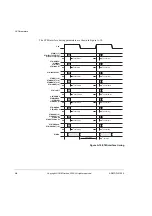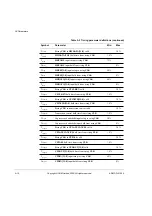
Test Support
Copyright © ARM Limited 2000. All rights reserved.
10-3
10.2 Scan insertion and ATPG
This technique is covered in detail in the ARM946E-S Implementation Guide. Scan
insertion requires that all register elements are replaced by scannable versions that are
then connected up into a number of large scan chains. These scan chains are used to set
up data patterns on the combinatorial logic between the registers, and capture the logic
outputs. The logic outputs are then scanned out while the next data pattern is scanned in.
You can use Automatic Test Pattern Generation (ATPG) tools to create the necessary
scan patterns to test the logic, when the scan insertion has been performed. With this
technique you can achieve very high fault coverage for the standard cell combinatorial
logic, typically in the 95-99% range.
Scan insertion does have an impact on the area and performance of the synthesized
design, due to the larger scan register elements and the serial routing between them.
However, to minimize these effects, the scan insertion is performed early in the
synthesis cycle and the design re-optimized with the scan elements in place.
10.2.1
ARM946E-S INTEST wrapper
In addition to the auto-inserted scan chains, ARM946E-S includes a dual-purpose
INTEST scan chain wrapper. This facilitates ATPG and provides an additional method
for activating BIST of the SRAM.
ATPG
You can use the INTEST scan chain to enable an ATPG tool to access the ARM946E-S
top-level inputs and outputs in an embedded design. This wrapper adds a scan source
for each ARM946E-S input and a capture cell for each output. The ATPG tools use this
scan chain in addition to the ones created by scan insertion, to test the logic from a given
input pin to any register that it connects to, and from any registers whose outputs end
up at a pin.
Note
The order of this scan chain is predetermined and must be maintained through synthesis
and place and route of the macrocell.
BIST activation
To enable the BIST hardware to be activated by scan means, the INTEST wrapper has
a second operational mode. When the ARM946E-S SERIALEN input is true, this scan
chain scans in serialized MCR instructions to initiate BIST test using the CP15 BIST
register. After a predetermined number of clock cycles (depending on the size of the
Summary of Contents for ARM946E-S
Page 1: ...ARM DDI 0155A ARM946E S Technical Reference Manual ...
Page 6: ...vi Copyright ARM Limited 2000 All rights reserved ARM DDI 0155A 04 Limited Confidential ...
Page 54: ...Programmer s Model 2 34 Copyright ARM Limited 2000 All rights reserved ARM DDI 0155A ...
Page 70: ...Caches 3 16 Copyright ARM Limited 2000 All rights reserved ARM DDI 0155A ...
Page 78: ...Protection Unit 4 8 Copyright ARM Limited 2000 All rights reserved ARM DDI 0155A ...
Page 112: ...Coprocessor Interface 7 14 Copyright ARM Limited 2000 All rights reserved ARM DDI 0155A ...


